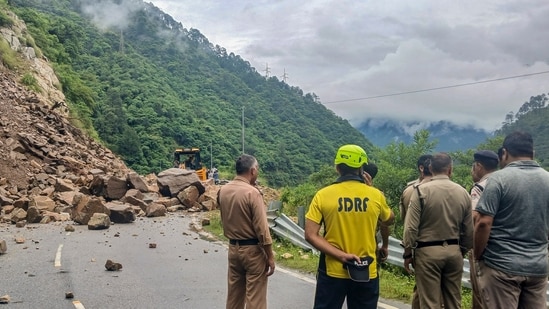Cloudburst in Uttarkashi: Impact and Rescue Operations

Introduction
The recent cloudburst in Uttarkashi, a picturesque district in Uttarakhand, has brought significant challenges to local communities and authorities. As natural disasters become increasingly frequent due to climate change, the implications of such events highlight the pressing need for effective disaster preparedness and response strategies. The Uttarkashi cloudburst has not only caused damage to infrastructure but has also raised concerns about the safety and well-being of residents in the region.
Details of the Incident
On October 10, 2023, a sudden cloudburst occurred in the Uttarkashi district, unleashing a torrent of rain that resulted in severe flash floods and landslides. According to the Indian Meteorological Department, the region received over 150 mm of rainfall in just a few hours, overwhelming local drainage systems. The cloudburst led to significant alterations in river courses, uprooting trees and destroying roads. Several villages, including Dhamwala, Kutti, and Narsi, experienced extensive damage, with many families displaced and properties destroyed.
Rescue Operations and Government Response
In the wake of the cloudburst, local administration and disaster management authorities sprang into action. The Uttarakhand State Disaster Response Force (SDRF) mobilized teams to conduct rescue operations, providing aid to those trapped in remote areas. Officials reported that helicopters were deployed to reach inaccessible regions, aiding in the swift evacuation of affected residents. As of now, over 200 people have been evacuated, and relief camps have been set up to provide shelter and basic supplies to the displaced families.
Impact on Local Communities
The immediate effects of the cloudburst are being felt across Uttarkashi, with many residents suffering losses of personal belongings, agricultural produce, and livestock. The local economy, which heavily relies on agriculture and tourism, is at risk of significant setbacks. Government officials have begun assessing the damage to provide adequate compensation and support for reconstruction efforts. Environmentalists are raising alarms about the long-term implications of increasingly volatile weather patterns in the region.
Conclusion
The Uttarkashi cloudburst is a stark reminder of the vulnerabilities faced by communities in hilly terrains. As rescue operations continue, the focus will also need to shift towards infrastructure resilience and long-term recovery plans. This incident underscores the importance of early warning systems and community preparedness in minimizing the impacts of future calamities. Continuous monitoring and support from the government and local authorities will be essential to help Uttarkashi recover and build a more resilient framework against such natural disasters.









